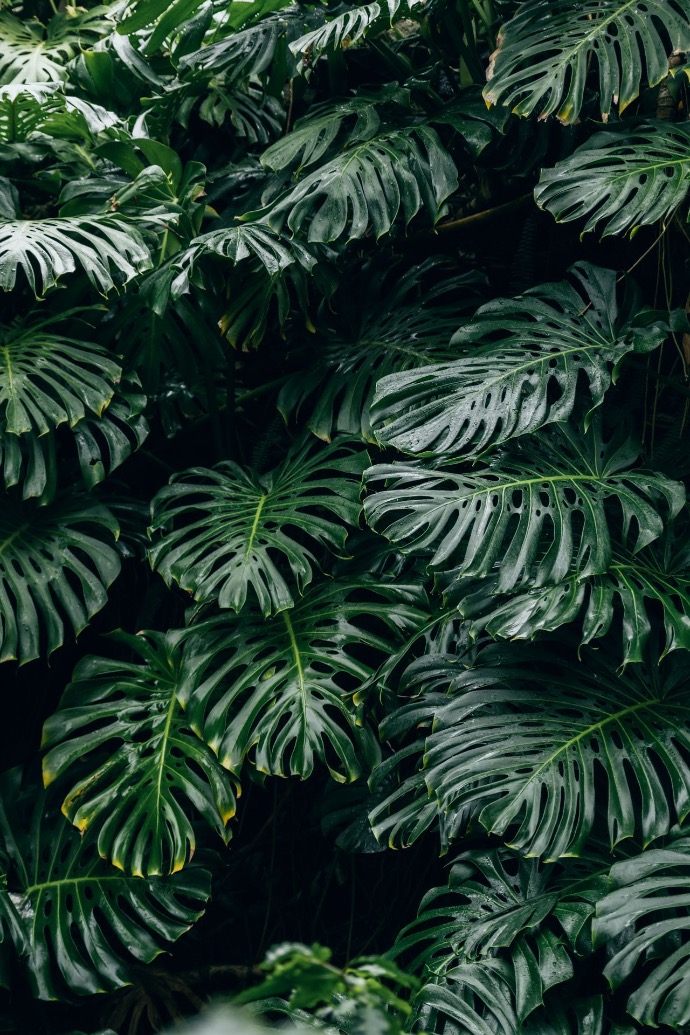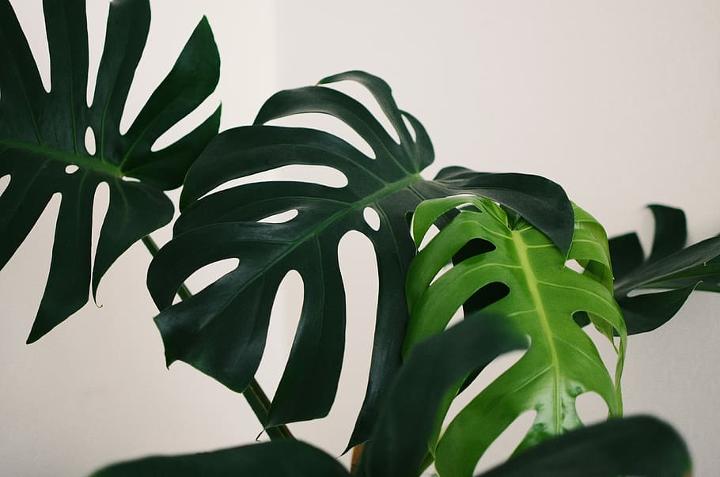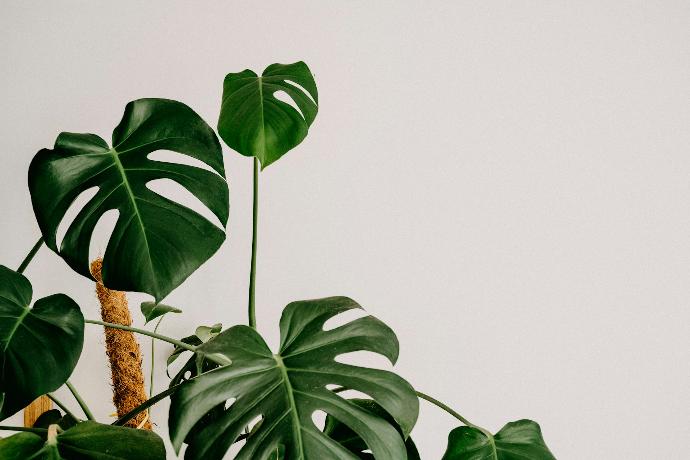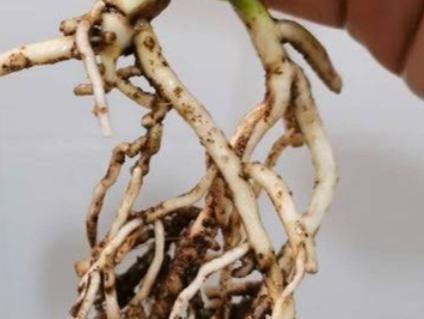Monstera Plant
Monstera, also known as Monstera deliciosa, is an indoor or outdoor plant with unique split leaves. Plant in well-draining soil and provide bright, indirect light. Allow the soil to partially dry between waterings. Pruning can be done to shape the plant and remove old or damaged leaves.

Habit
Climber
Height
2-3 meters
Growth
Fast
Soil
Well-drained, sandy loam
Shade
Partial sun to Full Sun
Moisture
Moist
Edible
No
Medicinal
No
Origin
Central America
Climatic Condition
Tropical, humid
Temperature (°)
20-30
Humidity (%)
70-80
Potting media
Loamy or peat-based soil
Fertilizers
Potassium-rich
Watering
High
Plant Weight
1-2 kg
Flowering Time
Spring to Fall
Soil Ph level
6.0-7.5
Water Ph level
6.0-6.5
Soil EC
0.3-0.4 mS/cm
Yield Per Plant
High
NPK ratio
20:20:20
life Span
5-10 years
Health Benefits
Used in ornamental gardening, purifies air, promotes relaxation
Suggested Grow Media or Potting Mix ?
50% peat moss, 30% perlite, 20% pine bark
Suggested Fertigation/Fertilizers
Fertilize every 4 weeks with a balanced, water-soluble fertilizer.
Common Diseases and Remedies
Anthracnose , Root Rot .
discoloration of leaves , eventually plant die.
spray neem oil , remove the infected plant parts .
HEALTH BENEFITS
- Improves air quality by filtering out toxins.
- Enhances mood and productivity in indoor spaces.
- Adds aesthetic value, promoting relaxation.
What Is An Monstera Plant?
The Monstera plant, scientifically known as Monstera deliciosa, is a species of flowering plant native to tropical forests of southern Mexico, south to Panama. It's well-known for its large, glossy green leaves that develop unique holes and splits as they mature, giving it the nickname "Swiss cheese plant." Monstera plants are popular as houseplants due to their striking appearance and relatively easy care requirements. They thrive in bright, indirect light and prefer moist, well-draining soil. Regular pruning can help control their size and shape, and they're known to tolerate a range of indoor temperatures

What Are The Different Types Of Monstera Plant?
1. Monstera deliciosa
The classic Monstera plant with large, glossy, split leaves
2. Monstera adansonii
Also known as the Swiss cheese vine, it has smaller leaves with more pronounced holes and is often grown as a trailing plant.
3. Monstera obliqua
This species has extremely thin leaves with many holes, giving it a delicate appearance. It's rare and highly sought after by collectors
4. Monstera borsigiana
Similar to Monstera deliciosa, but tends to have smaller leaves and grows more quickly
5. Monstera standleyana
Also called Philodendron cobra, it has elongated leaves with holes and is often grown as a climbing or trailing plant

How To Care For Plants Monstera?
1. Location
Monstera plants are native to the tropical rainforests of Central and South America, specifically from southern Mexico to Panama. In their natural habitat, they grow as epiphytes, climbing up trees and other structures to access sunlight. They thrive in warm, humid conditions with dappled sunlight and well-draining soil. However, they have also become popular as houseplants worldwide, grown indoors in a variety of climates
2. Sunshine
Monstera plants prefer bright, indirect sunlight. In their natural habitat, they typically grow under the canopy of trees where they receive filtered light. Indoors, placing them near a window where they can receive plenty of indirect sunlight is ideal. Direct sunlight can scorch their leaves, so it's best to avoid placing them in direct sunlight, especially during the hottest parts of the day. If the leaves start to develop brown spots or burn marks, it may be a sign that they're receiving too much sun
3. Soil
Monstera plants prefer well-draining soil that retains moisture but doesn't become waterlogged. A good potting mix for Monstera plants is one that is rich in organic matter and aerated, such as a mix of peat moss, perlite, and/or orchid bark. This type of soil allows for proper drainage while also retaining some moisture, which is important for the plant's health. Avoid using heavy soils or ones that compact easily, as they can lead to root rot. Additionally, adding some organic compost or slow-release fertilizer to the soil can provide nutrients to support healthy growth
4. Hydration
The hydration needs of a Monstera plant vary depending on factors such as temperature, humidity, and light levels. Generally, it's best to water your Monstera when the top inch or so of the soil feels dry to the touch. Overwatering can lead to root rot, so it's important to allow the soil to dry out slightly between waterings. However, it's also essential to ensure that the plant doesn't become completely dry, as this can stress the plant and cause leaf damage.

5. Nourishment
During the growing season (spring and summer), you can fertilize your Monstera plant every 4-6 weeks with a balanced liquid fertilizer diluted to half or quarter strength. Alternatively, you can use a slow-release fertilizer applied according to the manufacturer's instructions.Incorporating organic matter into the soil, such as compost or well-rotted manure, can help provide essential nutrients to the plant.
6. Issues
Wilting can be a sign of underwatering, overwatering, root rot, or environmental stress. Adjusting watering practices and ensuring proper environmental conditions can help revive a wilted Monstera plant.Common pests that can affect Monstera plants include spider mites, mealybugs, and scale insects. Regularly inspecting the plant for signs of pests and treating infestations promptly with insecticidal soap or neem oil can help keep them under control.
What Are The Benefits Of Growing Monstera Plant
Air purification: Like many houseplants, Monstera plants can help improve indoor air quality by absorbing pollutants such as formaldehyde and benzene from the air. Stress reduction: Caring for plants, including Monstera, has been shown to have positive effects on mental health, reducing stress and promoting relaxation. Increased humidity: Monstera plants release moisture into the air through a process called transpiration, which can help increase humidity levels in indoor spaces, benefiting respiratory health and reducing dryness. Biophilic design: Incorporating Monstera plants into indoor spaces can enhance biophilic design, which seeks to connect people with nature and create environments that support well-being.

FAQ'S About Growing Monstera Plant
1. What does a Monstera plant look like?
A Monstera plant typically has large, glossy green leaves that are deeply lobed or split, giving them a unique and striking appearance. The leaves often have oblong or heart-shaped outlines with irregular holes and splits along the edges, resembling Swiss cheese, which is why Monstera is sometimes called the "Swiss cheese plant."
2. What kind of soil does it prefer?
Monstera plants prefer a well-draining soil mix that retains some moisture but does not become waterlogged. A good soil mix for Monstera plants typically includes components such as peat moss, perlite, and/or orchid bark to ensure adequate drainage and aeration.
3. How much sunlight does a Monstera plant need?
Monstera plants thrive in bright, indirect sunlight. In their natural habitat, they grow under the canopy of trees where they receive filtered light. Indoors, place your Monstera plant near a window where it can receive plenty of indirect sunlight. Direct sunlight can scorch the leaves, so it's best to avoid placing them in direct sunlight, especially during the hottest parts of the day
4. When is the best time to repot a Monstera plant
The best time to repot a Monstera plant is typically in the spring or early summer, during its active growing season. Repotting during this time allows the plant to recover and establish itself in its new pot before its growth slows down in the fall and winter months.
5. What type of fertilizer is best for monstera plant?
For Monstera plants, a balanced liquid fertilizer diluted to half or quarter strength is generally recommended. Look for a fertilizer with an NPK ratio (nitrogen, phosphorus, and potassium) of around 10-10-10 or similar. During the growing season (spring and summer), you can fertilize your Monstera plant every 4-6 weeks to provide it with the nutrients it needs for healthy growth

